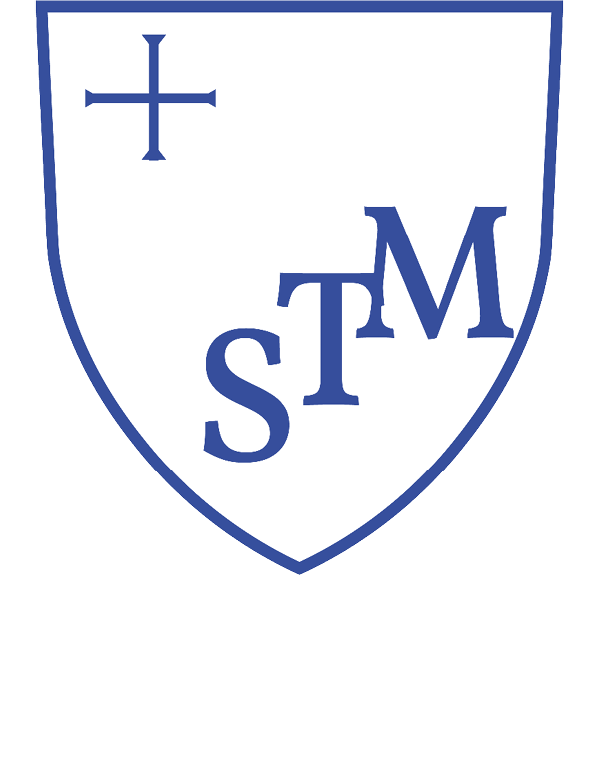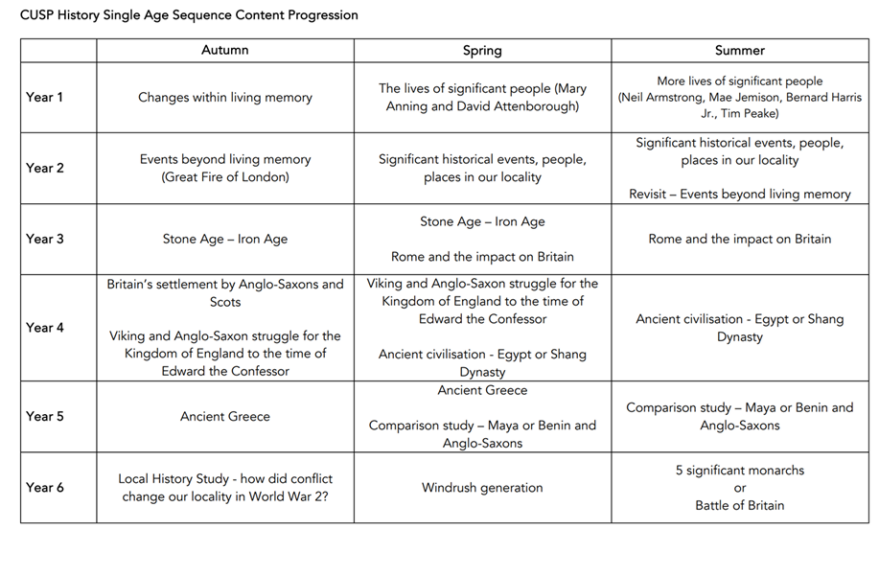History
At St Martin’s, we follow the CUSP History curriculum to provide a rich, knowledge-driven education that helps children understand the past and its influence on the present.
Our approach is rooted in high-quality teaching, ambitious content, and a commitment to developing historical thinking. We follow the CUSP History curriculum to deliver a rich, knowledge-led approach that builds pupils’ understanding of chronology, cause and consequence, and historical significance.
At St Martin's, History is more than a subject—it’s a gateway to understanding the past, shaping the future, and learning from those who came before us.
Big Ideas
CUSP History is built around powerful, recurring concepts that deepen pupils’ understanding of the past.
These include civilisation, monarchy, invasion, empire, society, and democracy.
Each unit explores these ideas through carefully framed enquiry questions, encouraging pupils to think critically and make connections across time periods.
The curriculum promotes historical thinking through cause and consequence, continuity and change, significance, and evidence. These big ideas are revisited and developed over time, helping children build a coherent and meaningful understanding of history.
This thematic approach ensures pupils grasp not just what happened, but why it matters and how it shaped the world today.
Content
The CUSP History curriculum covers a broad and ambitious range of historical periods, events, and individuals from EYFS to Year 6.
Pupils study changes within living memory, significant people, and local history in KS1.
In KS2, they explore ancient civilisations, British history including the Romans, Anglo-Saxons, Vikings, and key global events such as World War II.
Each unit includes substantive knowledge, disciplinary skills, and rich vocabulary. Pupils learn to construct historical arguments, analyse sources, and understand chronology. The content is carefully chosen to reflect diversity, significance, and relevance, ensuring pupils gain a well-rounded and inclusive understanding of the past.
Sequencing
CUSP History is sequenced to build cumulative knowledge and deepen understanding over time. Each unit connects to prior learning, allowing pupils to revisit and refine key concepts.
Chronology is central, with timelines and historical context guiding progression from EYFS through to Year 6.
The curriculum is designed to reduce cognitive load by introducing new content in manageable steps, supported by retrieval practice and spaced repetition. Substantive concepts and disciplinary knowledge are interleaved across year groups, ensuring pupils develop historical thinking skills alongside factual knowledge.
This structured sequencing helps children retain and apply what they learn with increasing sophistication.
Oracy and Vocabulary
Oracy and vocabulary are integral to CUSP History.
Each unit includes explicit teaching of Tier 2 and Tier 3 vocabulary, helping pupils articulate historical ideas with precision.
Pupils engage in structured talk, debates, and discussions to explore historical concepts and express their understanding.
Teachers model academic language and encourage pupils to use it in context. Vocabulary is revisited regularly to support retention and deepen comprehension.
Oracy activities such as storytelling, questioning, and reasoning help pupils develop confidence in speaking and listening. This focus on language supports both historical understanding and wider communication skills across the curriculum.
Assessment of Pupils
Assessment in CUSP History is both formative and summative, designed to support learning and track progress.
Teachers use retrieval practice, questioning, and low-stakes quizzes to assess understanding throughout each unit. Pupils complete tasks that demonstrate their ability to recall knowledge, apply vocabulary, and think historically. Summative assessments include written outcomes, timelines, and structured responses to enquiry questions.
Pupil Book Studies and knowledge organisers help monitor retention and identify gaps. Assessment is used to inform teaching, provide feedback, and plan interventions. This ensures all pupils are supported to make sustained progress and develop a secure grasp of historical knowledge and skills.
Reasonable Adjustments for Pupils with SEND
CUSP History is designed to be inclusive and accessible for all learners, including pupils with SEND.
Lessons follow consistent routines and use visual aids, dual-coded resources, and scaffolded tasks to support understanding.
Vocabulary is explicitly taught and revisited, helping pupils access complex ideas.
Teachers make reasonable adjustments such as simplified texts, additional modelling, and adapted questioning. Retrieval practice and repetition help reinforce learning.
Opportunities for oral responses and collaborative work support pupils with communication needs. Assessment is used to identify barriers and tailor support. This ensures all children can engage meaningfully with history and make progress at their own level.

